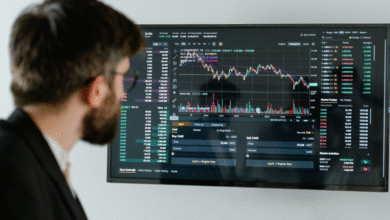
In the digital age, businesses, content creators, and organizations across the globe are producing massive amounts of digital content. Whether it’s images, videos, documents, audio, or graphics, the need to manage, organize, and distribute these assets efficiently has never been greater. This is where Media Asset Management (MAM) comes in. MAM refers to the systems and practices used to catalog, store, and retrieve digital assets. It plays an essential role in ensuring that content is easily accessible, reusable, and secure. For businesses looking to streamline operations, collaborate more effectively, and maintain control over their content, adopting a robust Media Asset Management system is no longer optional—it’s a necessity.
Media Asset Management involves more than just storing files; it’s about optimizing workflows, ensuring content is easily discoverable, and providing a centralized platform for all digital media. From managing complex digital libraries to ensuring content is secure and compliant with regulations, MAM systems are crucial in today’s fast-paced business environment. This article will explore the importance of Media Asset Management, the benefits it offers, key features, the challenges associated with implementing MAM systems, and the future of MAM in the digital landscape.
What is Media Asset Management?
Media Asset Management (MAM) refers to the technology and processes used to organize, store, and manage digital media assets. These assets include a wide range of content types such as videos, images, audio files, documents, and even the metadata associated with these files. A good MAM system allows businesses to store all of their digital assets in one place, track their usage, and retrieve them quickly when needed.
MAM systems are designed to make it easier for businesses to store their media content and then categorize and retrieve it using various criteria such as keywords, metadata, file format, or even content type. These systems typically include a combination of software and infrastructure, such as centralized storage solutions, tools for indexing and tagging assets, workflows for content approval and distribution, and secure access controls.
In short, Media Asset Management is about centralizing digital content and giving users the tools they need to efficiently organize, retrieve, and share those assets, all while maintaining security, compliance, and proper versioning.
The Growing Need for Media Asset Management
As digital content continues to grow exponentially, organizations across all sectors—whether media companies, marketing teams, e-commerce businesses, or educational institutions—are facing the challenge of managing an increasing amount of digital media. The sheer volume of content being created daily, along with the variety of file formats and devices involved, makes traditional file storage methods obsolete. Without a structured system in place, valuable content can become lost, corrupted, or unnecessarily duplicated, leading to inefficiencies, wasted resources, and potential legal or compliance risks.
A well-implemented MAM system ensures that businesses have a central repository to store digital assets, offering several important advantages. First, it saves time by providing easy access to content, which is particularly crucial in fast-paced industries like media and entertainment. Second, MAM helps maintain the integrity and security of digital assets, ensuring that they are backed up and protected from unauthorized access. Third, it facilitates collaboration by enabling different teams to work on the same assets in real-time, even across different locations. Lastly, MAM systems help companies comply with industry regulations by offering traceable audit trails and maintaining data governance.
Key Benefits of Media Asset Management
Adopting a Media Asset Management system provides several key advantages that can significantly enhance the efficiency, productivity, and security of an organization’s digital media management. Some of the most notable benefits include:
- Improved Efficiency and Productivity
The main advantage of implementing a MAM system is the improvement in operational efficiency. By centralizing digital assets in one easy-to-navigate platform, teams spend less time searching for files, which helps improve workflows. In industries like marketing, where content needs to be frequently repurposed for different campaigns, MAM systems make it easier to quickly locate the right assets and reuse them. This efficiency can also reduce production costs since businesses no longer need to spend resources recreating content that already exists.
- Better Content Organization and Management
MAM systems offer powerful organizational tools such as metadata tagging, categorization, and advanced search functionalities. Assets can be tagged with keywords and descriptions that make them easier to locate later. For example, if a company produces videos, a MAM system allows it to tag each video with information such as its topic, production date, content type, and more. This level of organization makes it possible to track the entire media library in a systematic manner.
- Enhanced Collaboration
With a centralized MAM system, teams across different departments can access, share, and collaborate on digital content more effectively. Instead of having files scattered across various storage devices, all content can be accessed through one unified platform. This is particularly valuable in industries like advertising, film production, or any business that requires multiple departments to collaborate on projects. Moreover, MAM systems often include tools for content versioning, ensuring that teams are always working with the most up-to-date version of any asset.
- Cost Savings
Maintaining multiple file systems or manually organizing assets can be costly, both in terms of time and resources. MAM systems eliminate these costs by streamlining workflows and preventing the duplication of assets. By enabling teams to find and reuse existing content, MAM helps organizations reduce redundancy, thereby lowering the costs associated with content creation. Additionally, many MAM systems offer cloud-based storage solutions, which can be more cost-effective than maintaining on-premises infrastructure.
- Security and Access Control
Digital assets are valuable resources for any organization, and protecting them from unauthorized access or loss is critical. MAM systems help safeguard content by providing strict security measures such as user authentication, encryption, and access control. Businesses can define user roles and permissions, ensuring that only authorized individuals can view, edit, or distribute sensitive content. Furthermore, audit trails within MAM systems track who accessed or modified an asset, providing transparency and accountability.
- Content Distribution and Repurposing
One of the key features of MAM systems is their ability to facilitate content distribution and repurposing. With digital content spread across multiple platforms—websites, social media, mobile apps, and more—having a system that enables quick distribution is essential. MAM systems can integrate with different distribution channels, ensuring that content can be pushed out seamlessly to the right audiences. Additionally, assets can be repurposed or transformed into new formats (e.g., editing a video for social media or creating marketing assets from existing photography).
Core Features of a Media Asset Management System
MAM systems come with a variety of features designed to optimize the management of digital content. These features include:
- Centralized Storage
A core feature of MAM systems is the ability to centralize media storage. This ensures that all digital content, whether it’s a high-definition video, an image, or an audio file, is stored in one secure location that’s easily accessible by authorized users. Centralized storage eliminates the need for disparate file systems, making it easier for teams to locate the assets they need without wasting time searching through different directories.
- Metadata Management
Effective metadata management is crucial to the success of a MAM system. Metadata is the information that describes an asset, such as its title, date of creation, creator, and keywords. With the help of metadata, MAM systems allow users to search and filter assets quickly, improving the chances of finding the right asset at the right time. Metadata management also helps with organizing files into categories, ensuring that assets are easy to retrieve and reuse.
- Version Control
In creative environments, assets often go through multiple versions before they are finalized. MAM systems offer version control features that help track the changes made to a digital asset. This is particularly useful when collaborating on projects, as it allows users to compare different versions of a file, ensure the latest version is being worked on, and revert to earlier versions if necessary.
- Advanced Search Capabilities
Search functionality is one of the most important features of a MAM system. With the vast amount of content businesses produce, being able to search assets quickly and efficiently is a game-changer. MAM systems offer advanced search capabilities that allow users to search based on metadata, keywords, file types, dates, and other criteria. These search features save time and improve efficiency, particularly in industries where quick access to assets is essential.
- Access Control and Permissions
To maintain security and data integrity, MAM systems offer access control and permissions. These features allow administrators to define who has access to specific assets and what actions they can perform on those assets. For example, one user may only have permission to view a file, while another may have the ability to edit or delete it. Access control ensures that sensitive content is protected and that only authorized users can interact with certain assets.
- Workflow Automation
MAM systems often include workflow automation features that streamline processes such as content approval, editing, transcoding, and distribution. Workflow automation helps businesses reduce bottlenecks and increase the speed at which content moves through the system. For example, a MAM system might automatically notify the relevant team members when a piece of content is ready for review, ensuring that no steps are skipped.
Challenges in Implementing Media Asset Management
While Media Asset Management systems offer significant benefits, implementing them can be a complex process. Some common challenges organizations face when adopting MAM systems include:
- Data Migration
Transferring existing content from traditional file storage systems into a new MAM platform can be time-consuming and challenging. The process may involve cataloging and tagging assets manually, ensuring all metadata is correct, and properly mapping old files to the new system. Data migration requires careful planning to avoid losing valuable assets or introducing errors into the system.
- User Adoption
A MAM system can only be effective if users adopt it and integrate it into their workflows. Employees who are used to traditional file management methods may resist the transition to a new system. Providing adequate training and demonstrating the benefits of the system can help ease the transition and ensure that employees are comfortable using the new tools.
- Integration with Existing Systems
Many organizations use a variety of other tools and systems, such as content management systems (CMS), project management software, or video editing platforms. Ensuring that the MAM system integrates seamlessly with these existing tools can be a challenge. However, modern MAM systems often come with integration capabilities that allow them to work well with other software used by the organization.
- Cost of Implementation
The cost of implementing a MAM system can be significant, particularly for smaller organizations. In addition to the cost of purchasing the system itself, businesses must also consider the costs of data migration, training, and ongoing support. However, the long-term benefits, such as improved efficiency and reduced redundancy, typically justify the initial investment.
The Future of Media Asset Management
As technology continues to evolve, so too will Media Asset Management systems. The rise of artificial intelligence (AI) and machine learning (ML) is expected to bring even more innovation to MAM systems, allowing for enhanced automation, better content discovery, and smarter organization. For example, AI-driven tools could automatically tag assets with metadata, identify content based on image or video recognition, and even recommend content for reuse based on past behaviors.
Additionally, as more businesses adopt cloud-based storage and computing solutions, MAM systems are becoming increasingly accessible to organizations of all sizes. Cloud MAM systems are scalable, cost-effective, and easy to manage, making them ideal for businesses looking to streamline their operations without the need for expensive on-site infrastructure.
The future of MAM will likely also involve greater collaboration between content creation, distribution, and consumption. As businesses continue to produce content across multiple platforms, MAM systems will play a critical role in ensuring content can be delivered to audiences in the most efficient and effective way possible.
Conclusion
In conclusion, Media Asset Management is an essential tool for modern organizations that produce and manage large volumes of digital content. By streamlining workflows, improving collaboration, enhancing security, and facilitating efficient distribution, MAM systems enable businesses to better manage their digital assets. Despite the challenges involved in implementation, the benefits of adopting a MAM system far outweigh the costs. As technology continues to evolve, MAM systems will become even more powerful, helping organizations stay ahead of the curve in a world that is increasingly driven by digital content. For businesses looking to gain control over their digital assets and optimize their operations, investing in a MAM solution is a crucial step toward success.




